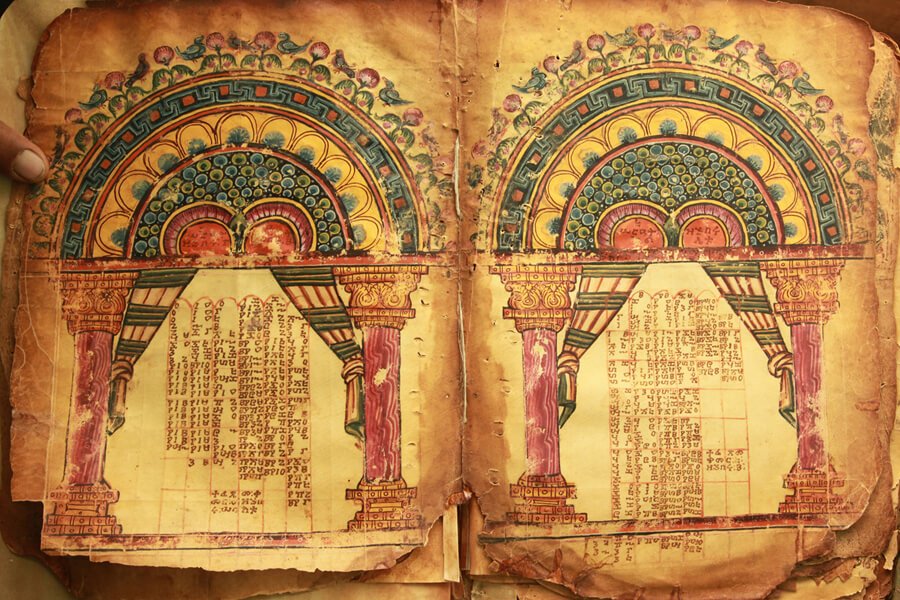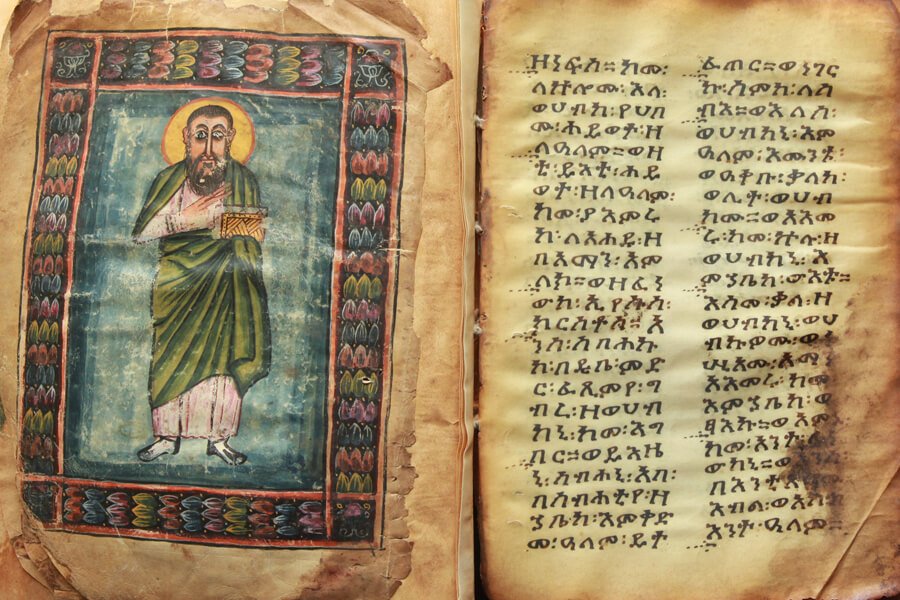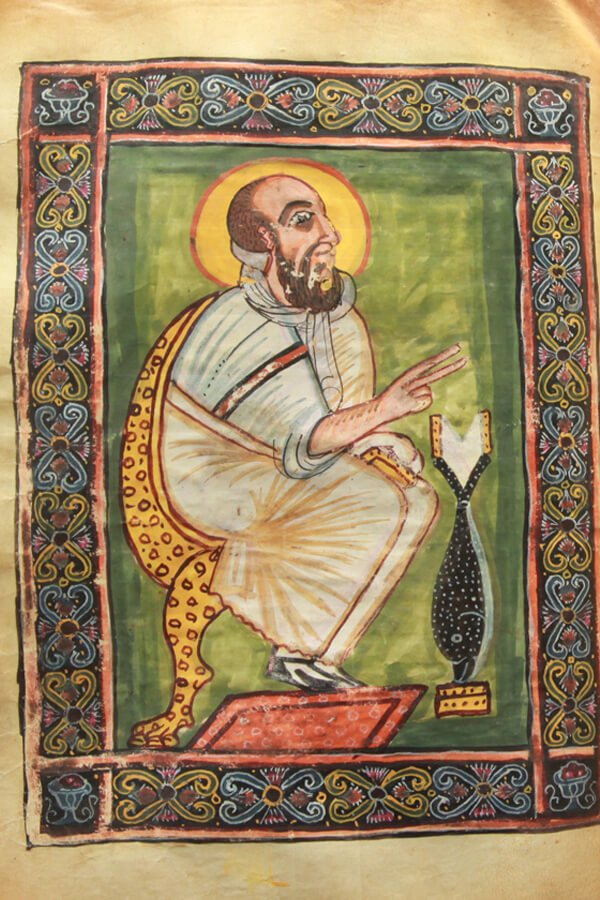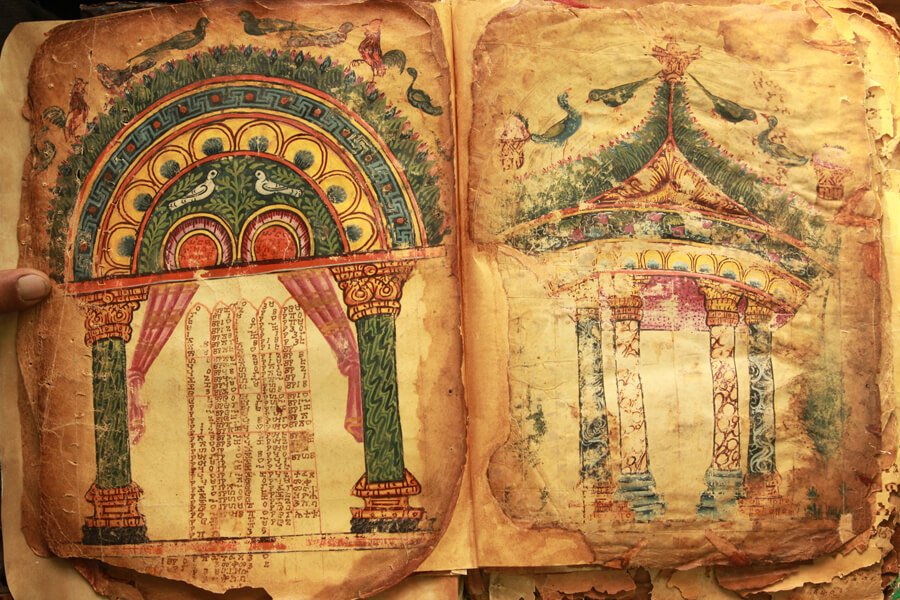I have a bit of a fascination with medieval Ethiopian art, although I don’t get to see it very often. So, imagine my delight when I discovered that country produced what are possibly the two earliest surviving illuminated Christian manuscripts in the entire world. They are the Garima Gospels, two gospel books written in the ancient Ethiopian language called Ge’ez. Radiocarbon analysis has suggested that they date somewhere between 330 and 650 CE. One is probably older than the other. The Rabbula Gospels, a Syrian manuscript that is the other candidate for oldest Christian illuminated manuscript, dates to 586 CE. Before being radiocarbon dating in the 21st century, the Garima Gospels were assumed to be no more than about 900 years old. However, it should be no surprise that Ethiopia produced such early Christian books. Ethiopia became one of the world’s first Christian kingdoms upon King Ezana’s conversion in the first half of the 4th century.

The Garima Gospels have long resided in the Abba Garima monastery. Tradition assigns the creation of both the monastery and the gospel books to a saint of that same name. Staying in this dry, remote location in northern Ethiopia has kept their colors vibrant. However, the centuries have still take their toll. In 2006 and 2013, the Ethiopian Heritage Fund provided conservation treatment to stabilize the gospel books and repair a shoddy rebinding.

When I first saw images of these manuscripts as part of an online course, their bright colors and expressive imagery – traits that I also respond to in illuminated manuscripts from other traditions – captured me right away. I especially love the canon tables with their peacock-like arches, faux marble columns, and cheerful bird inhabitants. Opposite one of the canon tables, appears a scene that probably depicts the Fountain of Youth (visible on the right of the bottom-most image here). With many of the same features as the canon tables, the fountain illustration is delightful despite its damage. I also enjoy the wide-eyed Evangelist portraits surrounded by vibrant border patterns.

Only a few images of the Garima Gospels appear online – mostly the gorgeous illuminated pages presented here. Apparently, there are digital facsimiles available, but accessing them requires some kind of subscription. And the manuscripts don’t ever leave home. In fact, conservation had to take place on site. One of the conservators wrote an account of his time working on the manuscripts at Abba Garima. It sounds like it was quite the adventure!
Unfortunately, Tigray, the area of Ethiopia containing the still-active Garima monastery, is currently experiencing a violent civil war. I hope that the monastery and its manuscripts are alright!

Sources
- “Garima Gospels found to be oldest surviving Christian illustrated manuscripts“. Medievalists.net. July 2010.
- “Research uncovers lost African school of painting”. The Art Newspaper, No. 252 9 December 2013). P.10.
- “The Garima Gospels“. Ethiopian Heritage Fund.

